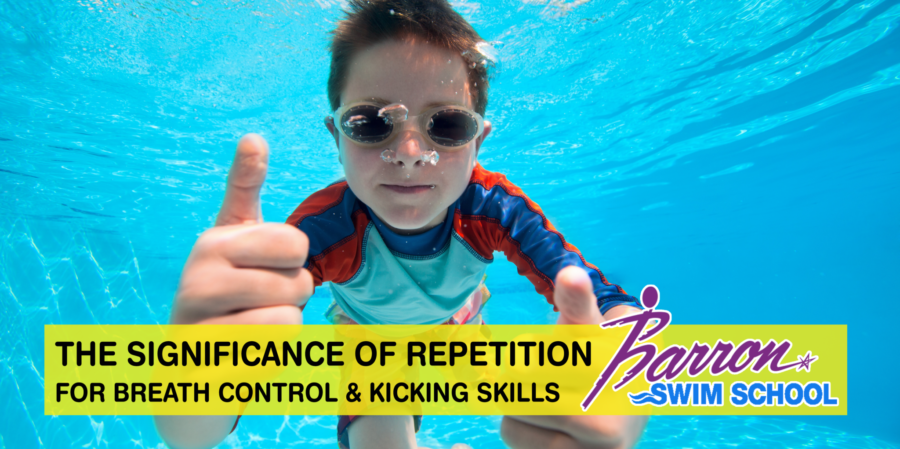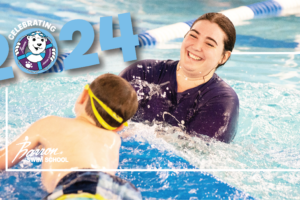Occasionally, parents have asked our Deck Supervisors why we work on bubble blowing and kicking. One of our primary goals is to help educate our parents and students on the importance of what we teach and why we teach it.
IMPORTANCE OF BREATH CONTROL
Why do you start every class blowing bubbles? Breath control and learning to breath is central to our curriculum. The exchange of bad air to receive good air, side breathing, is the hardest skill to master with freestyle. The reason for this is simple. Humans were not built to breathe under water, and it is not natural to hum (exhale) and blow bubbles underwater. However, that exchange has to be made in order to turn one’s head to the side and inhale fresh air. It is our belief that we want to start the breath control process as soon as we can.
Step-by-step Breath Control Progressions:
- Humming while putting face in the water
- Humming while kicking
- Floating in a starfish position on stomach while humming
- Rollover progression – click here for information regarding the rollover
- Side breathing
We want the kids to be comfortable humming and exhaling air under water as soon as possible. You may observe that when a child first tries to accomplish putting their face in the water and hum that they actually do the opposite – inhale and take in water because that is what is natural to do.
We have also been asked why we have ended classes with diving for fish or rings. We do this for two reasons. First, it reinforces the idea of making puffy cheeks (inhaling) and humming (exhaling) as they return to the surface. More times than not, a student is not even aware of how hard they are humming (exhaling) when they are surfacing. Finally, it is a fun activity and a great teaching tool. The students gain a sense of accomplishment when they retrieve a fish from the bench or make it to the bottom to retrieve a ring. As I mentioned earlier, side breathing is difficult to master, so patience is necessary. Once a student masters this skill, they will swim with a whole new confidence level.
IMPORTANCE OF KICKING
We will answer the question regarding kicking from two standpoints. First, from the developmental standpoint, kicking is one of the building blocks of movement and swimming. It is very natural for a person to move their legs in water. They might let their legs dangle off the edge of the pool or walk in the water without thinking twice about what they are doing. Once a child is able to move in the water, we like to practice kicking. We can incorporate a lot of skill training in while we kick. We can have a student put their face in and hum (breath control) while kicking. The kick is always the first part of the competitive stroke that we introduce. Our Aquatics Department Leader, Coach Jack Young, came from a very high level competitive coaching background. He has seen the sport of swimming evolve to where it is focused on kicking and going under water to do so. Kicking was taken for granted for twenty years. Today, it is so vital. Underwater kicking has become the fifth stroke.
In conclusion, learning to swim takes a lot of repetition. Repetition is simply defined as the reoccurrence of an action or event. Swimming is very much a learned reaction and response. The same things have to be done repeatedly to be accomplished. I hope this helps you to further understand why it is that we do certain things here at Barron Swim School.





